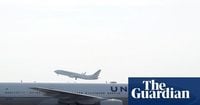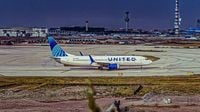On a brisk Friday afternoon, October 17, 2025, the bustling tarmac of Chicago’s O’Hare International Airport became the scene of yet another aviation incident in what some experts are calling a worrying trend for the industry. Two United Airlines jets—one a Boeing 737-700 carrying 113 passengers and five crew members, the other a stationary Boeing 767—made unexpected contact as the smaller aircraft taxied to its arrival gate after a flight from Jackson Hole, Wyoming. Miraculously, no one was injured, but the episode has reignited concerns about ground safety at America’s busiest airports.
According to United Airlines, Flight 2652 had just completed its two-hour and thirty-minute journey when its right wing clipped the horizontal stabilizer of the parked 767. The 767, which had no passengers onboard at the time, was idle as the 737 maneuvered through O’Hare’s notoriously complex ramp area. "On Friday afternoon, UA2652 was taxiing to its arrival gate when it made contact with the horizontal stabilizer of another United aircraft. Passengers deplaned normally and no injuries were reported. The other aircraft was stationary, and no passengers were onboard," a United spokesperson told CBS News Chicago.
For most people aboard Flight 2652, the incident passed almost unnoticed. Bill Marcus, a passenger returning from Wyoming, described the surreal calm inside the cabin. "I was shocked that I didn’t feel something more, although when they separated the planes there was some shuddering," Marcus recounted to CBS News Chicago. He and his fellow travelers only realized something was amiss when the pilot announced a delay to document the incident and ground staff began gathering around the right wing. Passengers were kept on the aircraft for just under an hour—about 40 minutes longer than expected—before being allowed to disembark safely.
Photos of the two jets, wingtip and stabilizer pressed together on the tarmac, quickly made the rounds on social media, sparking both relief and frustration among travelers and industry watchers. While the impact was described as light and a full inspection revealed no major damage, the 26-year-old Boeing 737-700 (registered as N21723) remained grounded in Chicago nearly a day after the incident. The condition and registration of the 767 remain unreported.
This latest mishap at O’Hare is not an isolated event. In fact, it’s part of a troubling pattern that’s been unfolding at major U.S. airports throughout 2025. Earlier this month, two Delta Air Lines regional jets collided at a taxiway intersection at New York’s LaGuardia Airport, injuring a flight attendant. Just a month prior, San Francisco International Airport saw two United aircraft involved in a similar minor collision, when a 737-900 clipped the tail of a parked aircraft. In May, two United 777s also tangled at San Francisco, though, again, there were no reported injuries.
Industry analysts and union representatives are raising alarms about what they see as lapsing safety standards, and they’re pointing fingers at one persistent issue: a nationwide shortage of air traffic controllers. According to Simple Flying, the Federal Aviation Administration (FAA) is in the midst of a massive hiring push, aiming to bring thousands of new controllers into the fold over the next few years. But for now, staffing levels remain well below targets, and the pressure on both ground crews and pilots is palpable.
Chicago O’Hare, with its eight active runways and maze of taxiways, is one of the most challenging operational environments in the country. As passenger numbers rebound to pre-pandemic levels and flight schedules grow ever more complex, the margin for error seems dangerously thin. "The uptick in ground incidents comes as leading US airports grapple with critical staffing shortages," Simple Flying noted, echoing the concerns of many in the industry.
Friday’s incident, though free of injury or major damage, has nonetheless added fuel to the ongoing debate about aviation safety in 2025—a year already marred by several high-profile crashes and near misses. The deadliest of these occurred in January, when an Army helicopter collided with an airliner preparing to land at Ronald Reagan Washington National Airport, resulting in the worst loss of life in decades. Each new event, no matter how minor, chips away at public confidence and puts renewed pressure on airlines and regulators to act.
For the passengers of Flight 2652, the experience was more inconvenience than catastrophe. United Airlines assured them of their safety and made arrangements for their continued travel. "All passengers were able to deplane safely and with no injuries reported," the airline confirmed to WGN News. Yet, for many, the incident was a sobering reminder that even the most routine moments in air travel—taxiing to a gate, waiting to disembark—can carry unexpected risks.
The FAA has launched an investigation into the O’Hare collision, as it does with all such incidents. While the agency has not released a preliminary cause, officials will be examining everything from ground crew communications to the intricacies of O’Hare’s taxiway layout. With the 737 still grounded and the 767’s status unclear, the financial and logistical ripple effects for United Airlines are likely to persist for several days.
United remains one of the world’s largest operators of both the Boeing 737 and 767, and the airline’s safety record—though generally strong—has come under increased scrutiny in recent months. As one of the few remaining U.S. carriers flying the 767 for passenger service, United’s operational challenges are compounded by the age and diversity of its fleet, as well as the sheer volume of flights passing through its Chicago hub.
As the investigation unfolds, industry leaders, regulators, and passengers alike are left to grapple with a fundamental question: Are these incidents a statistical blip, or do they signal deeper systemic problems in America’s aviation infrastructure? With air traffic volumes only expected to rise, the answer may determine the future of safe travel in the skies—and on the ground—for years to come.
For now, the uneventful outcome at O’Hare offers a moment of relief, but the calls for action are only growing louder. In an era of unprecedented demand and complexity, the challenge is clear: keeping passengers safe from takeoff to touchdown, and everywhere in between.


